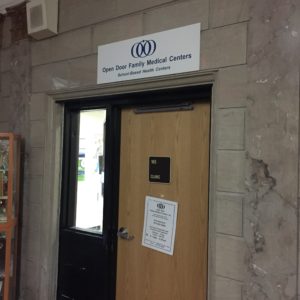Gaining the Collaborative Advantage: Holistic Designs for New Times
By Hal A. Lawson
The 20th Century management guru, Peter Drucker, claimed that planning for a more desirable future starts with “a theory of planned abandonment.” He offered a question to launch it: If we hadn’t inherited it, would we do it this way?
Implicit Assumptions in Current School Reform Approaches
Use this question to take stock of the inherited model for school reform. Begin with the main assumptions:
(1) All students will arrive regularly, on-time, and they will be ready and able to learn;
(2) Most students will remain in the same school and school system;
(3) Site-based teams consisting of educators and hand-picked parents pick the reform priorities for each academic year;
(4) Planning focuses on the school day and privileges academic learning and achievement;
(5) The school’s student support professionals and special educators are able to meet the needs of the limited number of students assigned to them;
(6) Teachers, usually working alone, are responsible for student engagement;
(7) After school ends, students return to home environments supportive of homework completion and healthy development;
(8) Instructional leadership and teacher professional development occupy most of principals’ time and effort; and
(9) The local PTA recruits parent volunteers to assist with bake sales and field trips.
In this walled-in and building-centered model educators “do it all, alone,” efforts are restricted to the school day, and there is an exclusive focus on academic learning and achievement.
21 Century Catalysts for Innovation
What forces and factors might stimulate timely, responsive innovations? The long list includes child and family poverty, increasing ethnic and cultural diversity, children’s mental health needs, sub-optimal high school graduation rates in too many school systems, and cradle-to-career systems designs structured to prepare all students for careers and post-secondary education.
Poverty and its companions are special priorities because they are root causes of stubborn problems such as irregular attendance and on-time arrival, inconsistent engagement and homework completion, and sub-optimal high school graduation rates. In New York, 1 in every 5 school age child experiences poverty-related challenges, but this doesn’t tell the entire story. When poverty is clustered in particular school districts and their place-based catchment areas, the challenges mount. For example, high student turnover is normative, and educator turnover follows.
Alternative Models for School Reform
Fortunately, alternative models for schools and school improvement are gaining traction in the United States and elsewhere in the world. They have advanced beyond the status of “special projects” because entire networks of these schools learn and improve together. Examples include: The Coalition for Community Schools; Communities in Schools; By All Means; STRIVE Together; and Ready by 21.
One main commonality in all such designs is “the collaborative advantage.” Specialized professionals work together, maximizing once-separate services and resources. Political agreements between mayors/city managers/county commissioners and school superintendents facilitate sharing with school systems; and vice versa. Boundary-crossing and -bridging intermediaries, oftentimes called “school-family-community coordinators”, function like United Nations language translators make it happen.

Extended programs and services are the second commonality. Out-of-school time programs, both school-based and offered in community agencies, are a signature feature. Health, mental health, and social services for students and families are another feature. Family support programs, sometimes offered through family resource centers, are another feature. And there are others, indicating what committed, savvy people can do when they plan and work together.
In addition to comprehensive services for students, educators, particularly teachers, no longer work alone. In the best models, everyone benefits, and results improve.
Emerging Practices in Odds-Beating Schools
Some of these innovative practices are emerging in odds-beating secondary schools. For example, social workers at Freeport High School were brought into the school from community organizations. These social workers are particularly adept at navigating the culture and language of the school’s growing Hispanic/Latino populations.
Additionally, at Maple Grove Junior/Senior High School, coordinated school-community activities enhances student learning and development. Academic learning is a top priority, but so is “a soft skills” curriculum” aimed at students’ social and emotional development.
